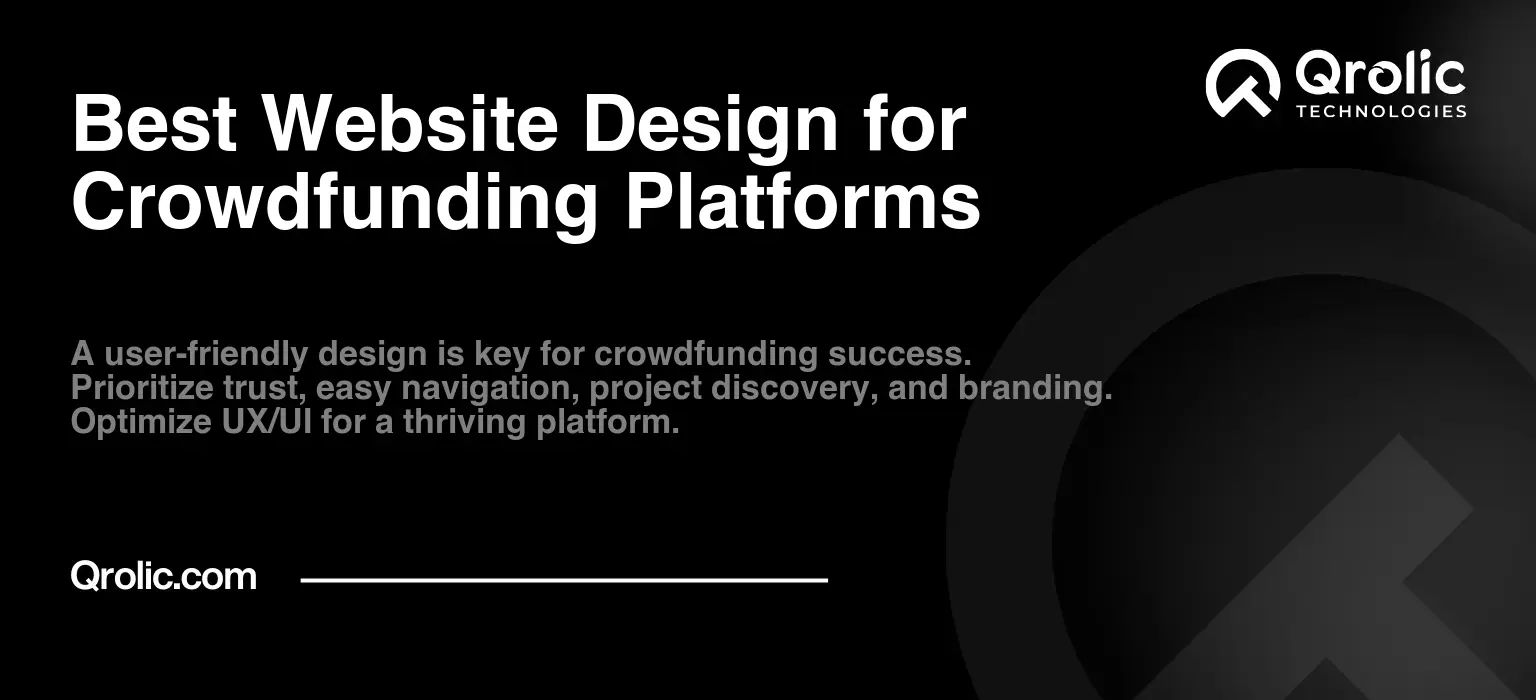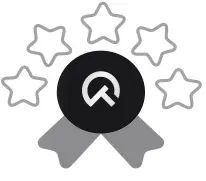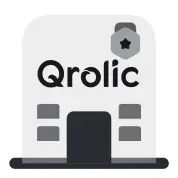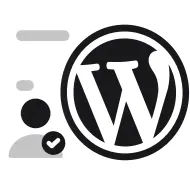The success of a crowdfunding platform hinges not just on compelling projects but also on a user-friendly and engaging website design. A poorly designed platform can deter potential backers and creators, leading to missed opportunities. This article explores the best practices in website design for crowdfunding platforms, providing insights into what makes a platform visually appealing, functionally efficient, and ultimately, successful. We will delve into key design elements, user experience (UX), user interface (UI), and practical strategies to help you create a thriving crowdfunding ecosystem.
Quick Summary:
- Great design builds trust and user engagement.
- Prioritize clear UX, UI, and mobile responsiveness.
- Effectively showcase projects with easy navigation.
- Build community and ensure platform transparency.
Table of Contents
- Why Website Design Matters for Crowdfunding Platforms
- First Impressions and Trust
- User Experience and Navigation
- Project Discovery and Engagement
- Branding and Differentiation
- Key Design Elements for a Successful Crowdfunding Platform
- Homepage Design
- Project Pages: The Heart of the Platform
- User Account and Profile Management
- Navigation and Search Functionality
- Mobile Responsiveness
- Enhancing User Experience (UX) on Crowdfunding Platforms
- Prioritizing User Needs
- Simplified Navigation and Accessibility
- Project Discovery Made Effortless
- Streamlined Backing Process
- Engaging Content and Communication
- Analytics and Iteration
- Optimizing User Interface (UI) for Crowdfunding Platforms
- Visual Hierarchy and Clarity
- Engaging Visual Elements
- Intuitive and Consistent Controls
- Mobile-First UI Design
- Accessibility Considerations
- Feedback and Testing
- Practical Strategies and Tips for Crowdfunding Platform Design
- Defining a Niche
- Building a Community
- Transparency and Trust
- Content Strategy
- Support and Training
- Collaboration and Partnerships
- Continuous Improvement
- Qrolic Technologies: Your Partner in Crowdfunding Platform Design
- Why Choose Qrolic Technologies?
- How Qrolic Technologies Can Help You
- Partnering for Success
Why Website Design Matters for Crowdfunding Platforms
A compelling website design is paramount for the success of any crowdfunding platform, and it’s about far more than just aesthetics. It directly influences user engagement, trust, and ultimately, the platform’s ability to facilitate successful funding campaigns. Here’s why website design matters so profoundly:
First Impressions and Trust
The initial few seconds a visitor spends on your platform are crucial. A clean, professional design instantly builds trust and credibility. Conversely, a cluttered, outdated design can immediately turn potential backers away, making them question the legitimacy of both the platform and the campaigns it hosts. A website that looks polished suggests that the platform is professionally managed and values its users, fostering confidence and encouraging participation.
User Experience and Navigation
A confusing or difficult-to-navigate website leads to frustration, not funding. The design must prioritize user experience (UX). This includes:
- Intuitive Navigation: Users should be able to easily find what they’re looking for, whether it’s a specific project, information about the platform, or their account settings.
- Clear Call-to-Actions (CTAs): Prominent and well-placed CTAs guide users towards desired actions, such as backing a project, creating a campaign, or signing up for an account.
- Mobile Responsiveness: With a significant portion of internet users accessing websites through mobile devices, a responsive design that adapts seamlessly to different screen sizes is no longer optional, but essential.
- Fast Loading Times: slow loading times can deter users, especially on mobile. Optimize your platform for speed to prevent user drop-off.
Project Discovery and Engagement
The design of your platform needs to effectively showcase projects. Users should easily discover and explore different campaigns that align with their interests. This involves:
- Effective Search and Filtering: Robust search and filtering options allow users to quickly find projects based on category, location, funding goal, and other criteria.
- Visually Appealing Project Pages: Project pages should be well-structured, with high-quality images and videos, and a clear explanation of the project’s goals and rewards.
- Social Sharing: Integrate social media sharing options to allow backers to easily spread the word about projects they support.
- Progress Tracking: Clear displays of a project’s funding progress, both in terms of the amount raised and the time remaining, create a sense of urgency and encourage more backers to participate.
Branding and Differentiation
Your website design is also a crucial part of your brand identity. A unique and memorable design can help your platform stand out from the competition. Consistent branding across your platform, from the logo to the color scheme to the typography, reinforces your identity and creates a cohesive user experience.
In essence, effective website design is the cornerstone of a successful crowdfunding platform. It builds trust, facilitates easy navigation, promotes project discovery, and establishes your unique brand, all of which are vital for attracting and retaining both backers and creators.
Key Design Elements for a Successful Crowdfunding Platform
Creating a successful crowdfunding platform requires a deep understanding of the essential design elements that contribute to its functionality, visual appeal, and overall user experience. Let’s break down these key aspects:
Homepage Design
The homepage is the front door of your platform, and its design has a significant impact on a visitor’s decision to stay or leave. The goal is to create a welcoming and informative space that quickly conveys the platform’s purpose and encourages engagement.
- Clear Value Proposition: Immediately communicate what your platform does and who it’s for. The main heading and subheadings should clearly explain the benefits for both project creators and backers.
- Compelling Visuals: Use high-quality, eye-catching images and videos to draw the visitor’s attention and create an emotional connection. A visually appealing homepage can capture interest quickly.
- Featured Projects: Showcase a selection of successful and compelling projects. Choose projects from different categories to appeal to a wider audience.
- Easy Navigation: Ensure the primary navigation is simple and intuitive. Key categories, search bars, and links to important pages should be easily accessible.
- Clear CTAs: Guide visitors toward the desired actions, such as browsing projects, starting a campaign, or creating an account, with prominent buttons and links.
- Social Proof: Include testimonials from satisfied users and highlight the total amount of funds raised on the platform to boost credibility.
- Responsive Layout: The homepage must be fully responsive and adapt to different screen sizes, providing a consistent experience across all devices.
Project Pages: The Heart of the Platform
Project pages are where potential backers decide whether to support a campaign. They must be well-structured, informative, and engaging.
- High-Quality Visuals: Include a compelling video and a selection of high-resolution images that showcase the project’s essence and goals.
- Clear Project Description: The project description should be concise, engaging, and explain the project’s purpose, goals, and impact. Use bullet points and subheadings to break down information and make it easy to read.
- Funding Details: Clearly display the funding goal, amount raised so far, the number of backers, and the remaining time for funding. Consider incorporating visual progress bars to indicate the project’s progress.
- Reward Tiers: Clearly present the rewards offered to backers at different funding levels. Use clear and simple language and add images where possible.
- Creator Bios: Include information about the project creators, building trust and allowing backers to connect with the individuals behind the campaigns.
- Comments/Updates: Enable a comment section for backers and creators to interact with each other and a section to share updates to build transparency.
- Social Sharing Options: Include buttons to allow backers to share the campaign with their social networks, helping increase the projects reach.
User Account and Profile Management
The user account area should be straightforward and user-friendly, allowing both backers and creators to manage their activities efficiently.
- Registration and Login: A simple and secure registration and login process is essential for attracting new users. Allow users to sign up via email, social media or through a combination of options.
- Dashboard Overview: Provide an overview of the user’s activity, including projects backed, projects created, and account settings.
- Payment Information: Offer a secure and intuitive way for users to manage their payment information, with clear options for adding and updating payment methods.
- Project Tracking: Provide a clear way for backers to monitor the progress of the projects they’ve funded and for creators to manage their campaigns.
- Communication Settings: Allow users to control their notification preferences.
- Privacy Controls: Offer privacy controls to allow users to manage their data and visibility on the platform.
Navigation and Search Functionality
Easy navigation and a robust search feature are vital for users to find the projects they’re interested in.
- Main Menu: Use a clear and concise main menu to direct users to key areas of the platform. The menu should be visible and consistent throughout the website.
- Search Bar: Offer a visible search bar that allows users to quickly find specific projects by keywords, names or categories.
- Filtering Options: Incorporate robust filters that allow users to sort projects by category, funding goal, funding progress, and other relevant criteria.
- Breadcrumbs: Use breadcrumbs to help users navigate through different sections of the website and track their current location.
Mobile Responsiveness
Given that many users access the internet from their mobile devices, your platform must provide an intuitive and seamless experience across all devices.
- Adaptive Layout: Design your platform so that it adapts automatically to different screen sizes, from large desktop monitors to small smartphone screens.
- Touch-Friendly Elements: Ensure all interactive elements, such as buttons and links, are easy to tap on a touch screen.
- Optimized Images and Videos: Optimize images and videos for mobile to ensure fast loading times, even on slower connections.
- Mobile Navigation: Implement a simplified mobile menu and navigation system for easy access to different sections.
- Consistent Experience: Ensure the mobile experience is consistent with the desktop experience in terms of branding, functionality, and usability.
By focusing on these key design elements, you can create a crowdfunding platform that is not only visually appealing but also user-friendly, efficient, and effective in facilitating funding for a diverse range of projects.
Enhancing User Experience (UX) on Crowdfunding Platforms
User experience (UX) is the backbone of any successful website, and for crowdfunding platforms, a focus on UX can make or break the platform’s ability to attract and retain users. UX is all about creating an environment that is both easy and enjoyable to use. Here are key strategies for enhancing the user experience on your platform:
Prioritizing User Needs
Understanding your target audience is the first step in creating a successful user experience. This involves considering the needs, behaviors, and motivations of both project creators and backers.
- User Research: Conduct user research, such as surveys and interviews, to understand what users expect from the platform. Learn about their needs, pain points, and expectations.
- User Personas: Develop user personas that represent different user types. This helps you tailor the platform to address the unique needs of each type of user, whether they are entrepreneurs looking to fund their projects, or individuals eager to back creative ideas.
- User Journey Mapping: Map out the user journey, from initial landing on the site to completing a transaction. Identify potential pain points and areas for improvement.
Simplified Navigation and Accessibility
A clear and intuitive navigation system is crucial for a positive user experience. Users should easily find what they’re looking for without frustration.
- Clear Information Architecture: Organize the website in a logical manner, making it easy for users to understand the platform’s structure.
- Intuitive Navigation: Implement a clear and consistent navigation system, with well-labeled menus, a prominent search bar, and easy-to-understand filter options.
- Responsive Design: Ensure the platform adapts to different devices, providing a seamless experience across desktops, tablets, and smartphones.
- Accessibility: Design for accessibility by adhering to guidelines such as WCAG, ensuring that users with disabilities can also navigate and use the platform.
Project Discovery Made Effortless
One of the primary functions of a crowdfunding platform is to facilitate the discovery of new and exciting projects.
- Powerful Search and Filtering: Implement a robust search functionality and advanced filtering options to allow users to find the projects that interest them. This should include keyword search, category filters, and project status filters.
- Personalized Recommendations: Provide personalized project recommendations based on user behavior, preferences, and past activities.
- Featured Projects: Highlight a selection of projects that are popular, successful, or new to the platform. Make it easy for users to discover campaigns that are interesting and compelling.
- Category Browsing: Allow users to browse projects based on categories and subcategories, simplifying the process of finding projects in specific areas of interest.
Streamlined Backing Process
Backing a project should be easy, quick, and secure, minimizing any barriers that could deter potential backers.
- Simplified Payment Options: Offer a variety of payment methods, including credit cards, debit cards, and digital wallets, making it as convenient as possible for users to back projects.
- Guest Checkout: Consider offering guest checkout to allow users to back a project without having to create an account.
- Clear Confirmation: Provide clear confirmation of a successful transaction, showing the amount of the pledge and any relevant details.
- Secure Payment Processing: Implement robust security measures to protect user payment information, building trust and confidence.
Engaging Content and Communication
Engaging content and clear communication are key for building a community around the platform.
- Compelling Project Descriptions: Provide tools for project creators to create compelling, informative, and well-structured project descriptions, highlighting their objectives and any potential rewards.
- Regular Updates: Allow project creators to share updates with backers, keeping them engaged with the progress of their project.
- Community Features: Include a comment and discussion section for backers and creators to interact, build relationships, and foster a sense of community.
- Clear Communication: Provide clear information about the platform’s policies and terms, as well as prompt and helpful customer service to address user inquiries.
Analytics and Iteration
Constantly monitor the platform’s performance, gather feedback, and make ongoing improvements.
- Track User Behavior: Use analytics to track user behavior on the platform, identify drop-off points, and understand how users interact with different features.
- User Feedback: Collect user feedback through surveys, feedback forms, and user testing. Use this feedback to identify areas for improvement.
- A/B Testing: Conduct A/B tests to compare different design and functionality options to determine what works best for your users.
- Iterative Design: Use an iterative design process, continually refining and improving the platform based on data and feedback.
By focusing on the user experience, you can create a crowdfunding platform that is not only effective in helping projects raise funds but also enjoyable and rewarding for both backers and creators.
Optimizing User Interface (UI) for Crowdfunding Platforms
While user experience (UX) focuses on the overall ease and flow of the platform, the user interface (UI) deals with the visual elements and how users interact with them. A well-designed UI enhances usability, engagement, and overall satisfaction. Here are strategies to optimize the UI for your crowdfunding platform:
Visual Hierarchy and Clarity
A clear visual hierarchy guides the user’s eye and makes it easy to understand the platform’s content and features.
- Consistent Layout: Maintain a consistent layout throughout the platform, making it easy for users to navigate and orient themselves.
- Strategic Use of Whitespace: Use white space to create a clean and uncluttered design, making content easier to read and digest.
- Appropriate Typography: Select clear and legible fonts that are appropriate for the platform’s content. Use headings, subheadings, and body text to create a visual hierarchy.
- Emphasis on Key Elements: Use color, size, and spacing to emphasize important elements, such as calls to action, featured projects, and funding progress.
Engaging Visual Elements
Visual elements are crucial for capturing user attention and creating a positive user experience.
- High-Quality Imagery: Use high-resolution images and videos that are relevant to the content and appeal to the target audience.
- Color Palette: Select a color palette that aligns with the platform’s brand and creates the desired mood and emotion. Ensure colors are accessible and contrast properly with text.
- Iconography: Use clear and recognizable icons to represent different features and actions, enhancing clarity and efficiency.
- Micro-Interactions: Incorporate subtle animations and micro-interactions to make the platform more engaging and intuitive to use.
Intuitive and Consistent Controls
Interactive elements should be intuitive and easy to use, encouraging users to engage with the platform.
- Clear CTAs: Design buttons and links that are visually distinct and clearly indicate their purpose. Use action-oriented text, such as “Back This Project” or “Start a Campaign.”
- Forms and Input Fields: Make forms and input fields easy to fill out, using clear labels, proper spacing, and input validation.
- Progress Indicators: Use visual progress indicators, such as bars or step-by-step guides, to show users where they are in a process, such as account registration or project creation.
- Consistent Controls: Maintain a consistent style for interactive elements throughout the platform, helping users to learn and use the system more efficiently.
Mobile-First UI Design
Given the prevalence of mobile devices, it is crucial to prioritize mobile UI design.
- Responsive Design: Ensure the UI adapts seamlessly to different screen sizes and resolutions, providing a consistent experience on all devices.
- Touch-Friendly Elements: Design interactive elements, such as buttons and links, that are large enough and spaced appropriately for easy tapping on touch screens.
- Simplified Navigation: Use simplified mobile menus and navigation that are easy to access and use on a small screen.
- Optimized Content: Optimize images and videos for mobile to ensure fast loading times and prevent user frustration.
Accessibility Considerations
Accessibility should be a primary concern in UI design, ensuring that the platform is usable for all users, including those with disabilities.
- Sufficient Contrast: Ensure there is sufficient color contrast between text and backgrounds to make the content easily readable for users with visual impairments.
- Keyboard Navigation: Design the UI to be navigable using a keyboard, allowing users who cannot use a mouse to access all features.
- Alternative Text: Use alternative text for images to provide descriptions for users who are visually impaired.
- Clear Labels: Use clear and descriptive labels for all interactive elements to aid users with cognitive impairments.
Feedback and Testing
Gather user feedback and conduct thorough testing to identify and address any UI issues.
- User Testing: Conduct user testing with real users to see how they interact with the UI, identify any pain points, and gather feedback.
- A/B Testing: Conduct A/B tests to compare different UI design options, such as button placement and color palettes, to determine what works best for your users.
- Analytics: Use analytics to track user behavior on the platform, identify usage patterns, and make data-driven decisions about UI improvements.
- Continuous Iteration: Use an iterative design process, continuously refining and improving the UI based on feedback and testing.
By optimizing the UI, you can create a crowdfunding platform that is not only visually appealing but also user-friendly, efficient, and enjoyable to use, ultimately leading to higher engagement and success.
Practical Strategies and Tips for Crowdfunding Platform Design
Building a successful crowdfunding platform requires not only a solid design foundation but also practical strategies and best practices. Here are some actionable tips to help you create a platform that stands out from the competition:
Defining a Niche
Instead of trying to be everything to everyone, consider focusing on a niche market. This will allow you to better cater to the specific needs of a specific audience, and it can help you differentiate yourself in the crowded crowdfunding landscape.
- Target Specific Categories: Consider specializing in particular project categories such as technology, art, music, or local community projects.
- Focus on a Specific Audience: Target a particular demographic, such as entrepreneurs, artists, or social impact organizations.
- Unique Selling Proposition (USP): Clearly define what makes your platform different from the competition.
Building a Community
A strong community can be a key differentiator for your platform. Encourage interaction and engagement among creators and backers.
- Forums and Discussions: Create forums or community discussion areas that allow users to interact with one another.
- Social Media Integration: Promote your platform and projects through social media, and encourage users to share content on their own networks.
- Regular Updates and Newsletters: Share updates and promote campaigns through regular newsletters.
- Events and Webinars: Host online events and webinars to engage with the community.
Transparency and Trust
Trust is crucial for any crowdfunding platform. Be transparent about your policies, fees, and processes.
- Clear Terms and Conditions: Provide clear and easy-to-understand terms and conditions.
- Secure Payment Processing: Use secure payment gateways and clearly communicate data protection measures to build confidence.
- Verified Accounts: Consider implementing a verified account system to enhance the credibility of creators.
- Dispute Resolution: Provide clear processes for dispute resolution to reassure users.
Content Strategy
High-quality content is essential for attracting and retaining users.
- Blog Posts: Create blog posts that are helpful, informative, and relevant to the crowdfunding process.
- Success Stories: Feature successful campaigns on your platform to showcase its effectiveness and inspire other creators.
- How-To Guides: Provide guides and tutorials for creating and promoting projects on your platform.
- Resources and Toolkits: Offer templates, checklists, and other resources to help creators craft effective campaigns.
Support and Training
Provide support and training for creators and backers.
- Customer Service: Offer prompt and helpful customer service to address any questions or concerns.
- Help Center: Create a comprehensive help center or FAQ section that answers common questions.
- Onboarding: Provide an onboarding process for new users to guide them through the platform’s features.
- Workshops and Training: Consider offering workshops and training sessions for creators who want to learn how to create a successful campaign.
Collaboration and Partnerships
Collaborate with complementary businesses to expand your reach and enhance your platform.
- Affiliate Programs: Partner with influencers and bloggers to promote your platform.
- Strategic Alliances: Form alliances with related organizations to increase visibility and reach new audiences.
- Integration with Other Platforms: Integrate with other tools and platforms that creators might be using, such as project management or social media tools.
Continuous Improvement
The world of crowdfunding is constantly evolving. Stay up-to-date on the latest design and technology trends.
- Monitor Metrics: Track important metrics, such as user engagement, conversion rates, and campaign success.
- Gather Feedback: Regularly gather feedback from creators and backers to identify areas for improvement.
- Regularly Update Your Website: Keep your platform up-to-date with the latest design trends and features.
By following these strategies and tips, you can create a crowdfunding platform that is not only visually appealing and user-friendly but also successful in facilitating the funding of a wide range of projects.
Qrolic Technologies: Your Partner in Crowdfunding Platform Design
Creating a high-quality crowdfunding platform demands expertise in web design, development, and user experience. This is where Qrolic Technologies (https://qrolic.com/) comes into play. With a proven track record of delivering innovative and user-centric solutions, Qrolic Technologies can be your trusted partner in building a crowdfunding platform that is not only visually appealing but also highly functional and effective.
Why Choose Qrolic Technologies?
Qrolic Technologies is a leading provider of web and software development services, offering comprehensive solutions tailored to meet the unique needs of businesses across various industries. Here’s why Qrolic is an excellent choice for your crowdfunding platform development:
- Expertise in Web Design and Development: Qrolic Technologies boasts a team of highly skilled designers and developers with extensive experience in creating custom web applications.
- User-Centered Approach: They prioritize user experience (UX) and user interface (UI) design to create a platform that is intuitive, engaging, and easy to use.
- Customized Solutions: Qrolic understands that every crowdfunding platform has unique requirements. They develop tailored solutions that align with your specific goals, target audience, and brand identity.
- Scalable and Reliable Technology: They utilize robust and scalable technologies that can handle a large volume of traffic and transactions, ensuring reliable performance and future growth.
- Mobile-First Design: Qrolic ensures that the platform is fully responsive and provides a seamless experience on all devices, from desktops to smartphones.
- Integration Capabilities: They can integrate your platform with third-party tools and services, such as payment gateways, email marketing platforms, and social media networks.
- Dedicated Support: Qrolic provides ongoing support and maintenance services to ensure that your platform runs smoothly and remains up-to-date with the latest technology trends.
How Qrolic Technologies Can Help You
Here are some ways in which Qrolic can help you build your crowdfunding platform:
- Custom Website Design and Development: Qrolic can create a visually appealing and user-friendly website that showcases your brand identity and resonates with your target audience.
- Platform Functionality Development: They can develop all the necessary features and functionalities, including user registration and authentication, project creation, payment processing, reward management, and community engagement tools.
- Mobile Application Development: Qrolic can create mobile apps for iOS and Android to enable users to access and manage their projects and funding from anywhere.
- Payment Gateway Integration: They can seamlessly integrate various payment gateways to facilitate secure and reliable online transactions.
- SEO Optimization: Qrolic can optimize your platform for search engines to help you attract more organic traffic and increase visibility.
- Ongoing Maintenance and Support: They can provide continuous maintenance, security updates, and technical support to ensure the platform operates effectively and remains secure.
Partnering for Success
By choosing Qrolic Technologies as your development partner, you are gaining access to a team of experts dedicated to helping you build a successful crowdfunding platform. Their expertise in web design, development, and user experience will ensure that your platform stands out in the competitive crowdfunding landscape and attracts both project creators and backers.
Ready to take your crowdfunding platform to the next level? Visit Qrolic Technologies’ website today at https://qrolic.com/ to learn more about how they can help you turn your vision into reality.






